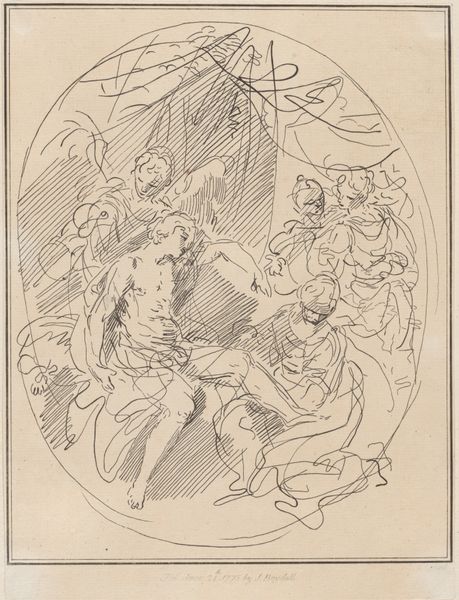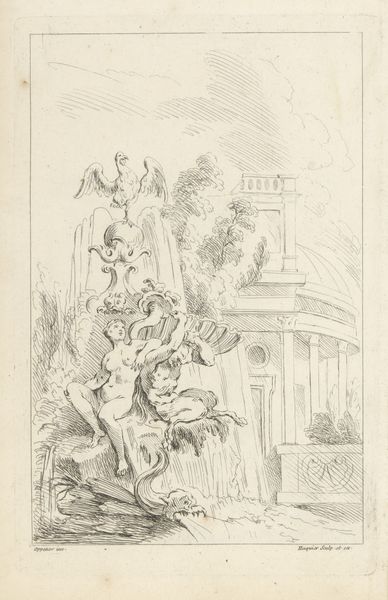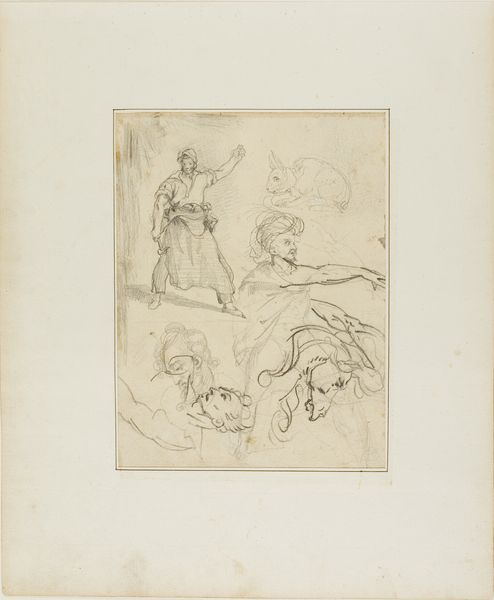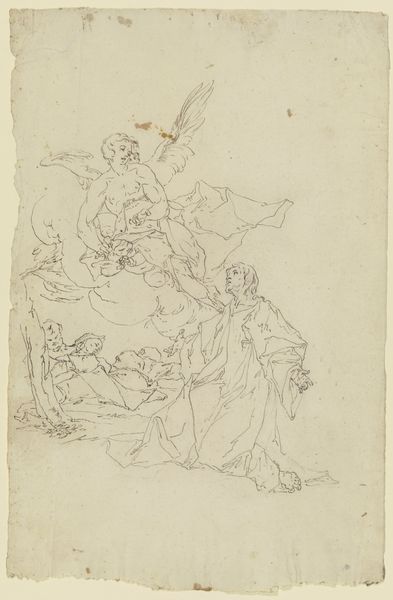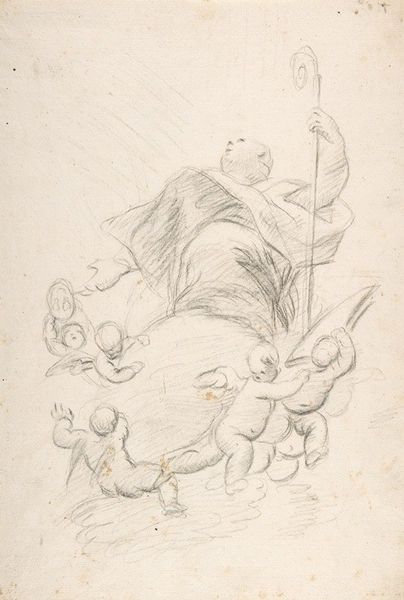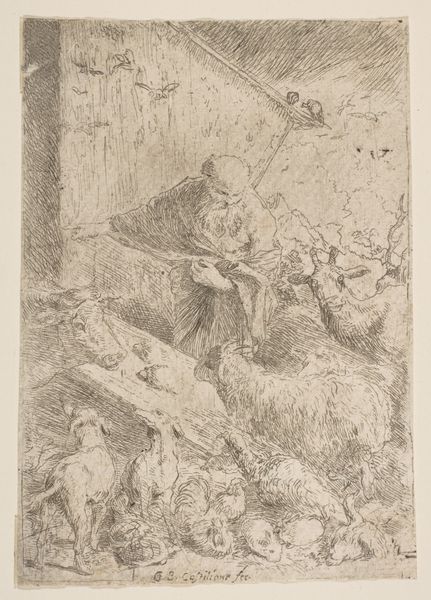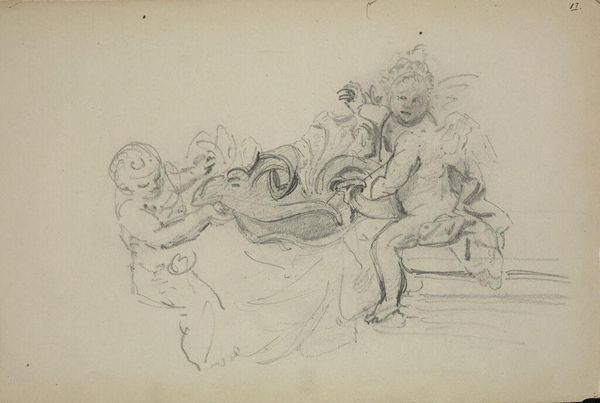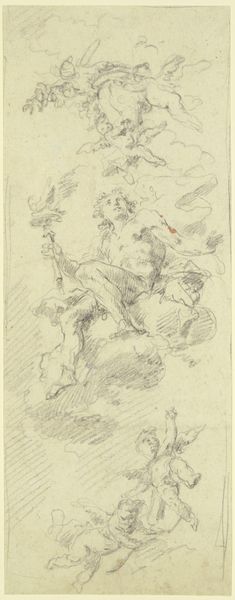
drawing
#
drawing
#
figuration
#
expressionism
Copyright: Public Domain: Artvee
Curator: James Ensor's drawing, possibly titled "Harvest of Love," presents a flurry of figures sketched in pencil. My first impression is one of dynamic energy, although a slightly unsettling kind. Editor: Yes, unsettling indeed. Considering the date inscribed at the bottom, this drawing was created quite late in Ensor's career. I'd argue that it's reflective of the avant-garde embrace of caricature and the grotesque. Look at those disproportionate limbs and somewhat menacing faces for what should be cherubic figures. Curator: I see what you mean about the limbs. Notice, however, the careful control of the pencil line, especially in rendering the curls of the hair. The overlapping of lines and hatching creates a sense of depth and movement. Editor: This may allude to the widespread anxieties during the interwar period in Europe, reflecting political instability and a loss of innocence. The image appropriates classical tropes only to undermine them with the harshness of reality, creating tension. Curator: Tension indeed. While it is unsigned, at the bottom he appears to be referencing Rococo master François Boucher with an annotation “after Boucher”. Boucher was known for these fleshy cherubic images that expressed a similar form but opposite emotional value to what Ensor has accomplished here. I want to dive deeper into the semiotics here. What can we derive? The cupids, seemingly symbols of love, wielding a sickle - an instrument generally associated with reaping or even death. Editor: Interesting you say this - in the sociopolitical climate of Ensor's Belgium at the time this art felt like a revolt to conservative bourgeoisie values and his piece was one of very few questioning institutions. Ensor does not intend the image to only critique institutions and question morality with such visual cues, but rather prompt deeper thought. Curator: Well, regardless of intention, the interplay between softness and roughness is quite effective, is it not? And the use of line and implied space makes this simple drawing have a very high effect to the viewers who consider it. It's also not "decorative," it conveys complex messages. Editor: That is very astute - by combining seemingly contradictory signs, Ensor creates ambiguity. It invites a deeper look into themes that still reverberate today, such as the interplay between innocence and experience.
Comments
No comments
Be the first to comment and join the conversation on the ultimate creative platform.

